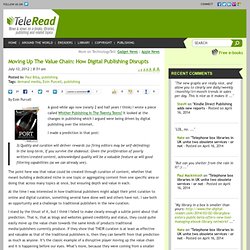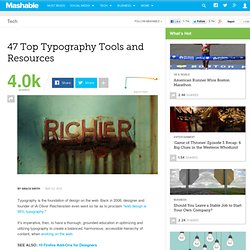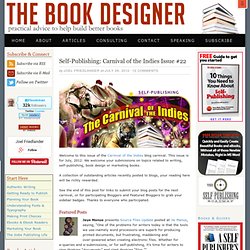

29 Content Marketing Secrets - Free eBook. The world of content marketing is full of mystery and intrigue with companies leveraging every possible resource to achieve a competitive advantage.

In the fast changing world of digital marketing, no resource is more valued than the coveted “Content Marketing Secret Agent”. These covert content operatives perform their customer segmentation, persona development and editorial planning in the dead of night while most marketers are asleep, snug in their beds. While the average content marketer dreams of page views and search engine rankings, Content Marketing Secret Agents are mapping the customer journey, crafting meaningful messages that pull prospects from awareness to measurable conversions. Few have been able to crack the code of this elite group but if anyone could, it’s the content marketing smarties at TopRank Online Marketing.
We’ve collected some of the best tips just for you. Moving Up The Value Chain: How Digital Publishing Disrupts. By Eoin Purcell A good while ago now (nearly 2 and half years I think) I wrote a piece called Whither Publishing In The Twenty Teens?

It looked at the changes in publishing which I argued were being driven by digital publishing over the internet. I made a prediction in that post: 3) Quality and curation will deliver rewards (so firing editors may be self-defeating) in the long-term, if you survive the shakeout. Given the proliferation of poorly written/created content, acknowledged quality will be a valuable feature as will good filtering capabilities (as we can already see). The point here was that value could be created through curation of content, whether that meant building a dedicated niche in one topic or aggregating content from one specific area or doing that across many topics at once, but ensuring depth and value in each.
21 Top Links to Book Fonts for Self-Publishing. 47 Top Typography Tools and Resources. Typography is the foundation of design on the web.

Back in 2006, designer and founder of iA Oliver Reichenstein even went so far as to proclaim "web design is 95% typography. " It's imperative, then, to have a thorough, grounded education in optimizing and utilizing typography to create a balanced, harmonious, accessible hierarchy of content, when working on the web. To help you improve and learn more about typography, we have compiled 25 useful tools and resources, from fundamentals to modular scales. Have we left out your favorite typography tool or resource? If so, please share your recommendations with other readers in the comments. 1. Founded in 2008, Typekit offers a library of fonts, from old classics to new favorites, which can be used on the web.
The browsing interface is well organized. 2. Recently acquired by Monotype, Typecast provides a platform to quickly style type in the browser and check for readability, rendering and beauty as you work. 3. 4. 5. Top Links to Fonts for Your Self-Published Book. One of the most often-asked questions on the blog is: “What text font should I use for my book?” In fact, this question comes up so often I’ve written quite a few articles on the subject. But like most blogs, these posts can be hard to find in the dark reaches of the archives. After writing earlier this week about the posts with the most blog comments, I realized that I had never brought all these articles together in one place. To make up for that, and as a resource I can point to when people ask the question again about the best book font—certain to happen in the very near future—I’ve brought them all together here.
Self-Publishing: Carnival of the Indies Issue #22. Welcome to this issue of the Carnival of the Indies blog carnival.

This issue is for July, 2012. We welcome your submissions on topics related to writing, self-publishing, book design or marketing books. A collection of outstanding articles recently posted to blogs, your reading here will be richly rewarded. See the end of this post for links to submit your blog posts for the next carnival, or for participating Bloggers and Featured Bloggers to grab your sidebar badges. Thanks to everyone who participated. Featured Posts Jaye Manus presents Source Files Update posted at Jw Manus, saying, “One of the problems for writers today is that the tools we use–namely word processors–are superb for producing printed documents, but frustrating, maddening and over-powered when creating electronic files.
Linda Gillard presents Independent Authors and Visibility posted at The Alliance of Independent Authors Advice Blog. Toni @ Duolit presents How Much Does Self-Publishing Cost? Book Design and Production. Self-publishing writers should aspire to writing well, not fast. By Chris Meadows The “Writer Beware” blog usually warns of scams and fly-by-night publishers trying to take advantage of inexperienced writers, but a guest post from writer and writing instructor Marcia Yudkin warns of something else—inexperienced writers apparently trying to take advantage of readers. I’m reminded of the aphorism, “Fast, cheap, good: pick any two”—because Yudkin is talking about writers who write fast, and self-publish for cheap, but may not actually be any good. Yudkin talks about communities she’s encountered where writers, enamored of the way they could make money right away by listing cheap e-books on Amazon, share tips on how to write as fast as possible, review each other’s work, and so on.
But in all the talk about becoming a faster writer, there doesn’t seem to be much about becoming a better writer. The idea seems to be to turn it out as fast as possible so you can sell as many as possible. I still think it’s a surmountable problem, however.